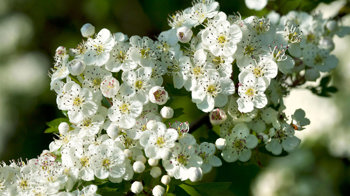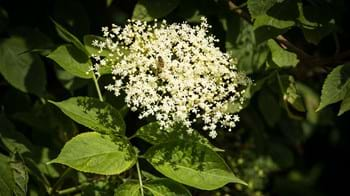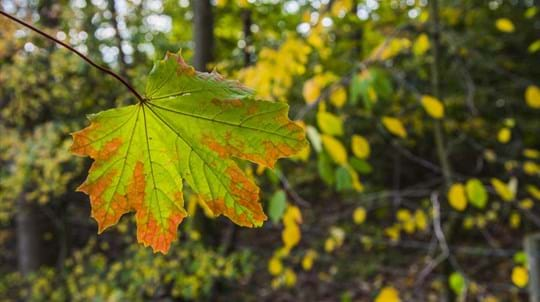
Priestley Wood
Barking Needham Market

Woodland Trust wood
23.68 ha (58.51 acres)
TM081530
Explorer 211
OS Landranger 155
Considered to be one of the finest woods in Suffolk for its rich plant life. What's thought to be the county's last wild pear tree can be found here, as well as several species of orchid. Mid-April to early-June is usually an ideal time to visit for a great display of bluebells, or to listen for the song of the nightingale.
Features
- Public access
- Autumn colour
- Spring flowers
- Broadleaved woodland
How to get to Priestley Wood
Priestley Wood is a mile south of Needham Market in Suffolk. The village of Barking is to the west. It forms part of the picturesque landscape around Barking Church.
Priestley Wood is situated off the B1078 in between Needham Market and the village of Barking.
Please note there is no car park at the wood.
The nearest train station is in Needham Market.
For more up-to-date information on public transport, visit traveline.info.
There is a local bus service run by First Bus.
For more up-to-date information on public transport, visit traveline.info.
Facilities and access
There is a public right of way running from the main entrance (accessed via kissing gate), up Putt Hawks Lane and exiting at the start of Swingen's Wood.
The route has a slight incline and all tracks are uneven earth rides that can become very muddy in winter.
There is no parking available at the wood. Visitors are advised to park on the roads in Barking village and walk from there.
The nearest public toilets are in Needham Market, including disabled toilets (accessed with RADAR key).
Wildlife and habitats
Animals
Visit at dusk and you may be in for a treat: the song of the scarce and elusive nightingale.
At the turn of the millennium, as part of Natural England’s Species Recovery Programme, Priestley Wood also saw the reintroduction of dormice, a rare and declining species strongly associated with ancient woods.
Trees, plants and fungi
Some 130 different types of flowering plants have been recorded here, including many rare and uncommon species. Priestley is the best wood in Suffolk for woodruff and nettle-leaved bellflower, according to the woodland historian and botanist Oliver Rackham, and one of the best for cherry. It also has twayblade and common spotted orchids, wild garlic, broad-leaved helleborine, herb paris and primroses, as well as a stunning display of bluebells each spring.
As for trees, the wood has important specimens of small-leaved lime and hornbeam. A single wild pear is thought to be the last remaining specimen in the whole county. The autumn colour show is special too.
Habitats
Priestley Wood would once have been part of the forest that covered the whole of East Anglia. The Anglo Saxons cleared large areas of this forest for farmland so that by the Middle Ages only fragments remained. The wood became a valuable source of timber and was intensively coppiced as a result.
Today this coppice woodland provides just the sort of cover birds like nightingales love. Centuries of uninterrupted tree cover has also sheltered ancient woodland plants and old trees that have been lost from other parts of the county. Look out for huge coppice stools of ash and small-leaved lime which are hundreds of years old.
The wood also contains two woodland ponds.

A lasting legacy
This wood is just one of many to have been protected by gifts in wills, securing it for generations to come. Your legacy gift could also make a real difference to woods, trees and wildlife.
Learn what your gift could meanAbout Priestley Wood
History
In 1251 Hugo de Northwold, the Bishop of Ely, commissioned a great survey of his estates. The earliest of its kind, it has an especially full account of the parish of Barking in Suffolk, including mention of “a certain other grove which is called Prestele, which contains in itself 30 acres”. More than 750 years on, Priestley Wood remains little changed, and with neighbouring Swingen’s Wood and others nearby is collectively known as the Barking Woods. Together they rank among the finest ancient woodlands in East Anglia.
The ancient holloway Puttock’s Lane (a puttock is an old word for a buzzard or kite) makes its now overgrown way past Priestley Wood, which is circled by a medieval woodbank. Boundary pollards are another unmistakable marker of an ancient woodland. Coppicing was reintroduced here back in the 1980s, and the entire wood has been designated a Site of Special Scientific Interest for its plantlife.






































